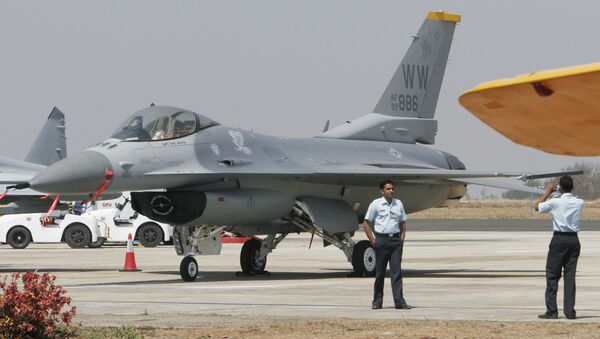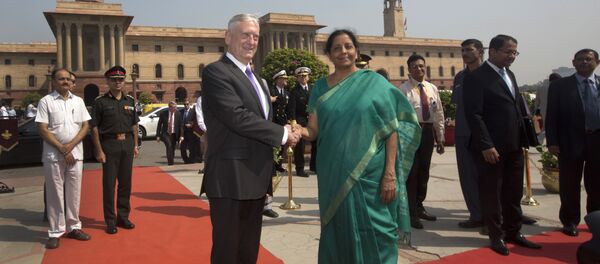New Delhi (Sputnik) — US Defense Secretary James Mattis’ New Delhi visit last week was the first time the top leaders of the two countries interacted at a high level following the announcement of President Donald Trump’s new South Asia policy.
In her joint press briefing with Mattis, Sitharaman said: “I reiterated India’s deep interest in enhancing defense manufacturing in India under PM Modi’s Make-in-India initiative. I thank Secretary Mattis for his supportive position in this regard and look forward to working closely with him to realize joint projects.”
Experts in India are divided on whether such an agreement would indeed give India access to cutting-edge weapons technology. Harsh Pant, a distinguished fellow at the Observer Research Foundation is of the opinion that the agreement for further expanding defense ties will shape the trajectory of India-US bilateral ties, given the fact that healthy growth has been recorded, with defense trade rising from $1 billion to over $15 billion in the span of about a decade.
“Both India and the US recognize the importance of expanding defense ties and its broader role in shaping the trajectory of bilateral ties. More importantly, the leadership on both sides is ready to invest in that. President Trump’s South Asia strategy brings India to the center stage of Washington’s Afghanistan policy. India and the US share similar concerns and views in areas like terrorism, freedom of navigation in the South China Sea and other areas. The US is no longer coy about selling sensitive military technologies to India. New Delhi, too, is ready to diversify its sources of military hardware,” Harsh Pant told Sputnik.
"Both India and the US, through the Defense Technology and Trade Initiatives, are looking to elevate the India-US defense relationship from a buyer-seller engagement to a partnership model, working to co-develop and produce key defense technologies," Pant adds.
However, another expert points out that it is too simplistic to assume that the US-India strategic partnership in cutting-edge defense technology would be smooth, especially when both sides want to augment domestic production capabilities to boost job creation. The case in point being: Prime Minister Narendra Modi’s Make in India initiative and President Trump’s concept of America First.
“Sitharaman would know that the US doesn’t 'co-develop' weapons or transfer military technology developed at enormous cost. It prefers to sell weapons and keep the end-users on a tight leash,” M.K. Bhadrakumar, a former career diplomat, wrote in an op-ed article in The Tribune.
Bhadrakumar opines that “US firms want to retain control over technology” and avoid “liability” when jointly producing equipment with Indian counterparts, therefore “‘Make in India’ is fast becoming a nuisance.”
“The challenge for Indian diplomacy lies in differentiating the imperative needs of India’s military modernization (and the creation of a world-class defense industry) from the geopolitics swirling around the region,” he adds.







